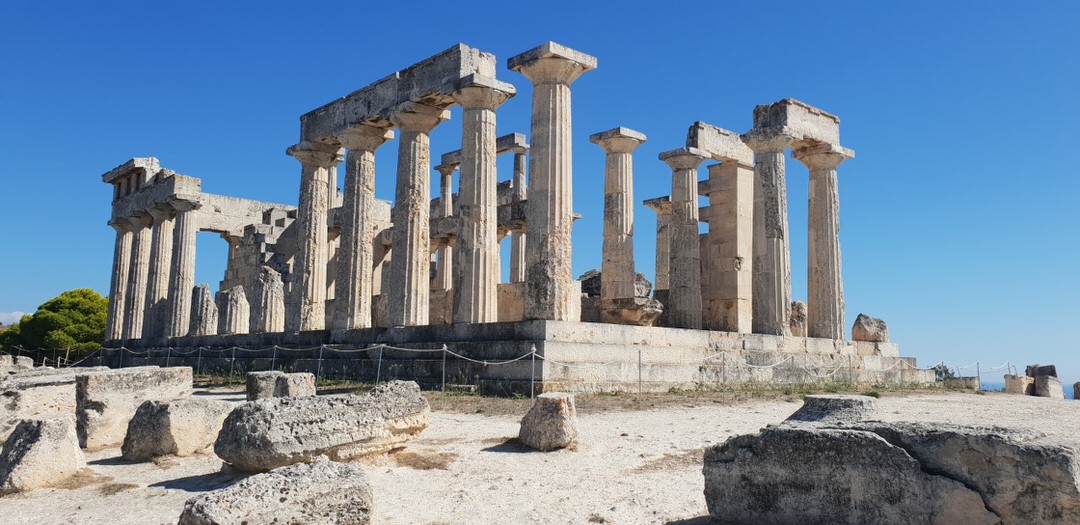
The sanctuary, the temple and the museum of Aphaia in Aegina
BACKGROUND. The Temple of Aphaia on the island of Aegina, dating to the end of the Archaic period, circa 500 BCE, represents the completion of the setting down of the basic tenets of the Doric order of Greek architecture (Biers, p. 157). It was built of limestone after the previous temple on the site, made of wood and constructed circa 570 BCE.

Temple of Aphaia What to see in Aegina
INFORMATION. The temple of Aphaia stands on a pine-clad hill in northeast Aegina. It is the most important monument in the sanctuary of Aphaia, which appears to have been founded on a site used for worship since the Mycenaean period. Pausanias (2, 30, 3-5) mentions the myth of Aphaia and identifies her with the Cretan divinity Britomartis.

Temple of Aphaia, Egina Island, Greece null Greece, Greek islands
THE TEMPLE OF APHAIA ON AEGINA: THE DATE OF THE RECONSTRUCTION IT is widely believed that c. 510 BC the sixth-century Temple of Aphaia on Aegina was. 510); A. Invernizzi, I Frontini del Tempio di Aphaia ad Egina (Turin 1965) 258 (c. 510); P.M. Fraser, 'Archaeology in Greece, 1969-1970', AR 1969-70, 7 (c. 520-510); B.S.
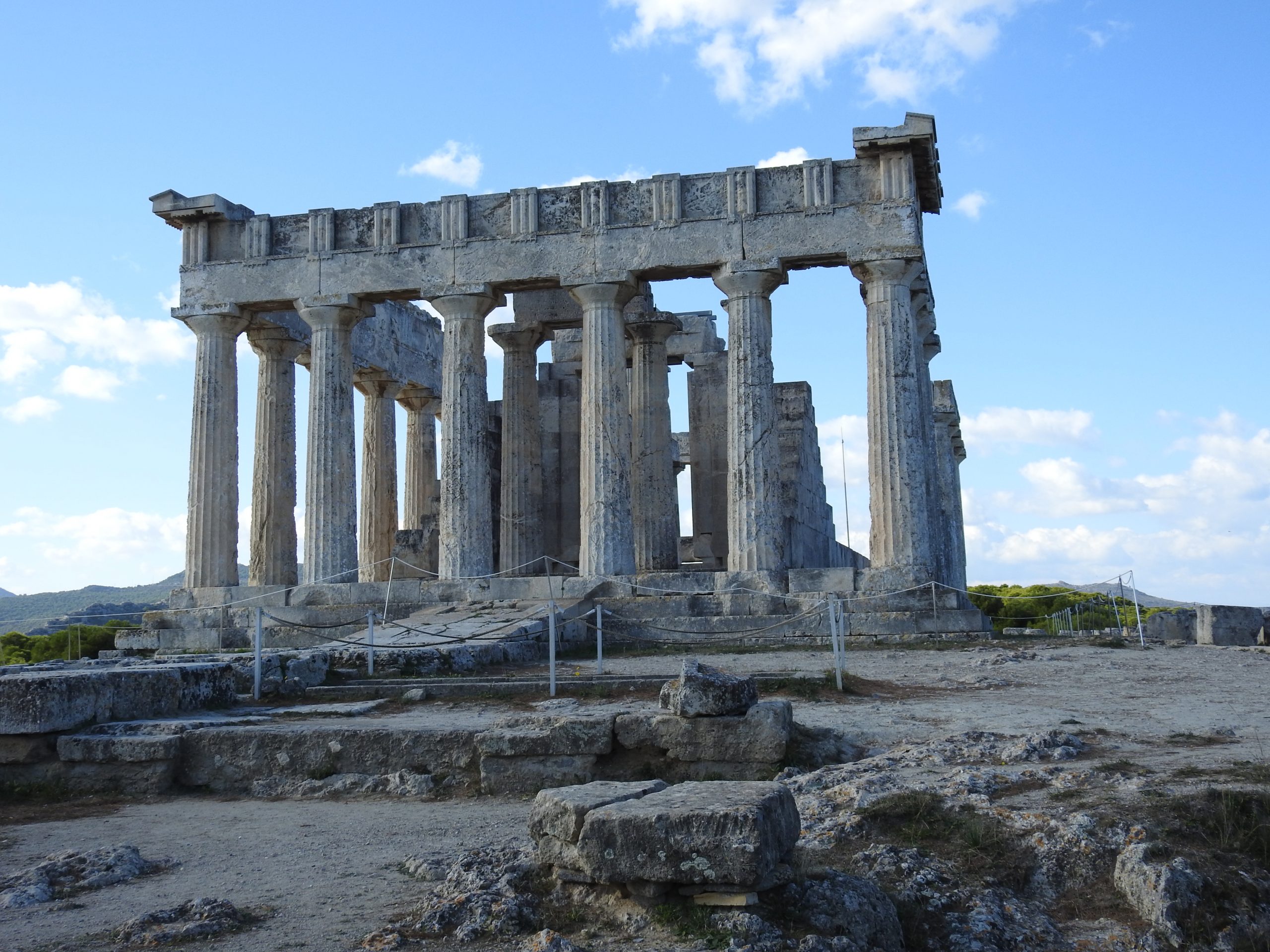
Tour the Temple of Aphaia in Aegina
Aphaia (Greek: Ἀφαία, Aphaía) was a Greek goddess who was worshipped almost exclusively at a single sanctuary on the island of Aegina in the Saronic Gulf. Cult and worship [ edit ] She originated as early as the 14th century BCE as a local deity associated with fertility and the agricultural cycle. [1]

Temple Of Aphaia Afea On Aegina Island Of Stock Footage SBV313046594
Scusate se arrivo al porto di Egina dal Pireo, quindi sono senza mezzo per muovermi poi sull'isola, sapete dirmi come faccio ad arrivare al Tempio di Aphaia? Beppe56Genova. Genova 35 contributions. Gli autobus per Aia (santa) Marina passano per il Tempio. Read all replies. View all. Also popular with travelers.

Temple of Aphaia Aegina 500 BCE Templos, Arquitetura grega antiga
However, from the middle of the fifth-century BC, the Athenians dominated the rival island of Aegina, and the Temple of Aphaia was linked with the goddess Athena. The Temple was built in 500 BC and is made of porous limestone that was later coated with an outer layer of stucco and richly painted. Like the Parthenon and the Temple of Poseidon.

Aphaia Temple GR Cycling
An early temple of ca. 570 BC was probably built on the site; fragments of this structure were built into the terrace wall. The temple was decorated with sculptures in the two pediments. An early set (East Pediment 1 and West Pediment 1), carved in the early fifth century, was discarded for uncertain reasons (possibly political) and set up in.

Temple of Aphaia at Aegina (Illustration) Ancient History Encyclopedia
Note: Recent scholarship suggests that both pediments of the Temple of Aphaia at Aegina were made at the same time in the Early Classical period, likely by two different workshops working in two different styles. East and West Pediments from the Temple of Aphaia, Aegina, Archaic/Early Classical Periods, c. 490-480 B.C.E. (Glyptothek, Munich)
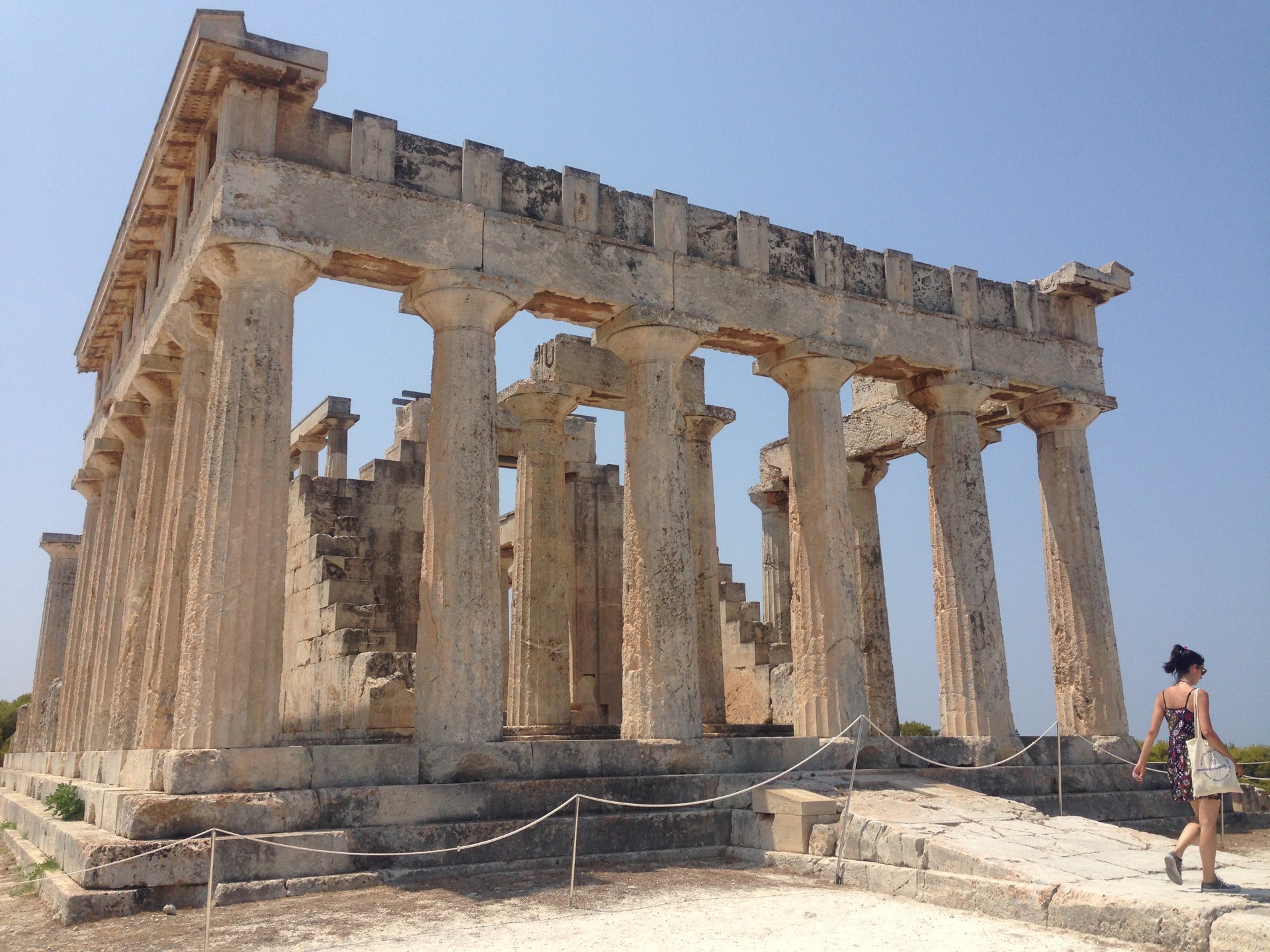
Temple of Aphaia What to see in Aegina
Il tempio di Afaia nell'isola greca di Egina è un tempio dedicato alla dea locale dell'isola. Fasi storiche del santuario Pianta del santuario di Afaia a Egina: in blu le strutture del VII secolo a.C., in verde quelle del VI e in arancione quelle del V.. Il Mito di Aphaia Foto di Pompeo Maritati, su associazioneitaloellenica.org.
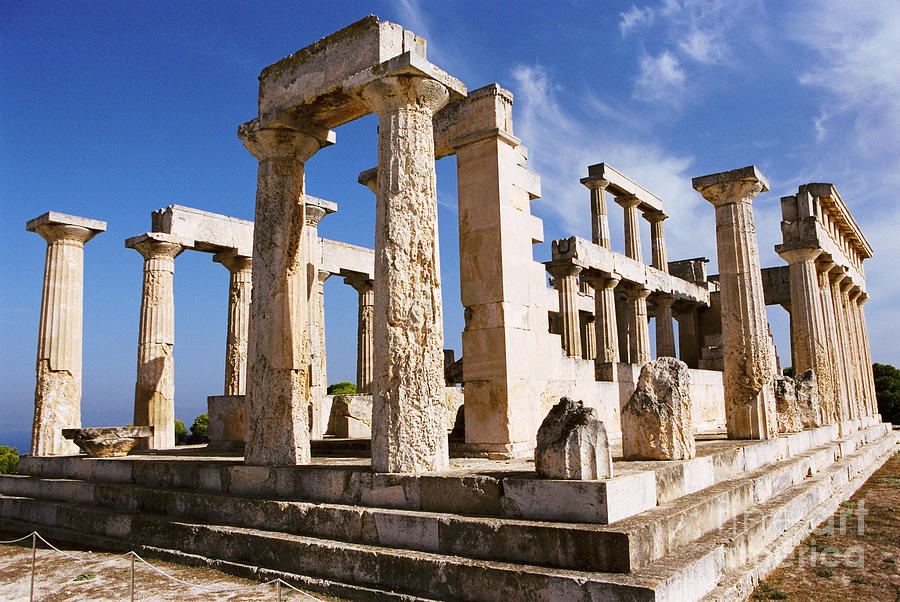
Temple of Aphaia on Aegina Photograph by Paul Cowan
Tour privato dell'isola di Egina, San Nektarios e Tempio di Athina Aphaia (a partire da 394,76 €) Tour privato ad Egina, Tempio di Afaia e delizie al pistacchio (a partire da 401,56 €) Egina Discovery Tour (incl. drink e meze!) (a partire da 90,48 €) Tour in bici elettrica di 3 ore a Egina (a partire da 96,58 €)

The Temple of Aphaia, Aegina, Greece (Illustration) Ancient History
English: The Temple of Aphaea or Temple of Aphaia is a Doric temple dating to circa 600 BCE or earlier and located on the Greek island of Aegina 31 miles (50 km) from Athens. The First Temple of Aphaea was dedicated to Aphaea, goddess of hunting but the roof was destroyed by fire around 510 BCE. The Second Temple of Aphaea Athena was likely dedicated jointly to Aphaea and Athena, goddess of.

Temple of Aphaia (or Afea) The mustsee attraction in Aegina
Appunto di storia dell'arte che descrive in modo approfondito e chiaro le caratteristiche del Tempio di Afaia a Egina Invia appunti. Partenone e santuario di aphaia ad egina. Tempio di Nettuno.

Athena Aphaia Temple in Aegina, Greece Greeka
Historical records and archaeological excavation have shown that a significant temple structure stood on the site in the 6th century BC and it is believed this earlier incarnation was destroyed by fire in 510 BC. The importance of the Aphaia sanctuary declined after the Athenians began to dominate Aegina from the middle of the 5th century BC.

The Temple of Aphaia, 500 BC. Aegina island, Greece. (2560x1707
The Temple of Aphaia is one of the most important and well-preserved monuments in Greece. This is the most important surviving monument of the Sanctuary, dedicated to Aphaia. The temple was built around 500-490 BC. and is a Doric pavilion. It is an intersection for the ancient Greek architecture since it has a colonnade of 12 columns on the.

Temple of Aphaia The Temple of Aphaia, on the Island of Ae… Flickr
About. Transcript. East and West Pediments from the Temple of Aphaia, Aegina, Archaic/Early Classical Periods, c. 490-480 B.C.E. (Glyptothek, Munich) Speakers: Dr. Beth Harris and Dr. Steven Zucker. Note: Recent scholarship suggests that both pediments of the Temple of Aphaia at Aegina were made at the same time in the Early Classical period.
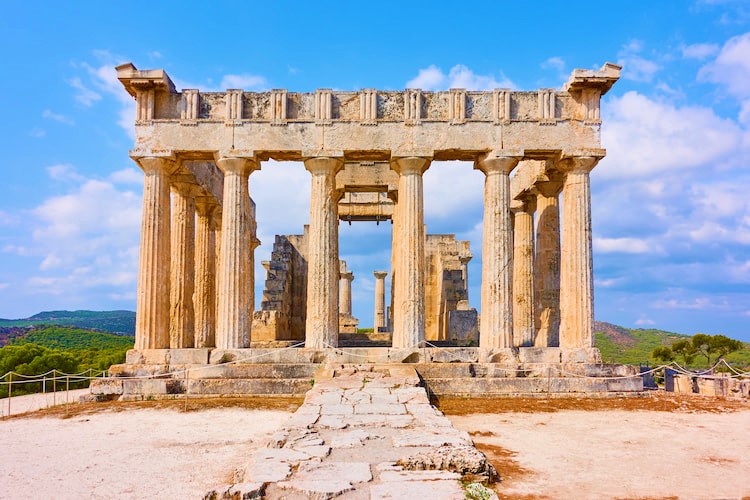
Classical Ancient Temple Of Aphaea Athina In Stock Photo By ©Panos
Il Tempio di Afea (Aphaia, Afaia) nell'isola di Egina (fig.1) e' descritto da Pausania nella Periegesi della Grecia, edizione a cura di Antonio Nibby (Roma, 1817, I, libro 2, capo 30, 3, p.205). Pausania, inserendolo nel contesto storico narrato da Erodoto, lo dice edificato da Eaco sul monte di Zeus e racconta di averne veduto le sculture.